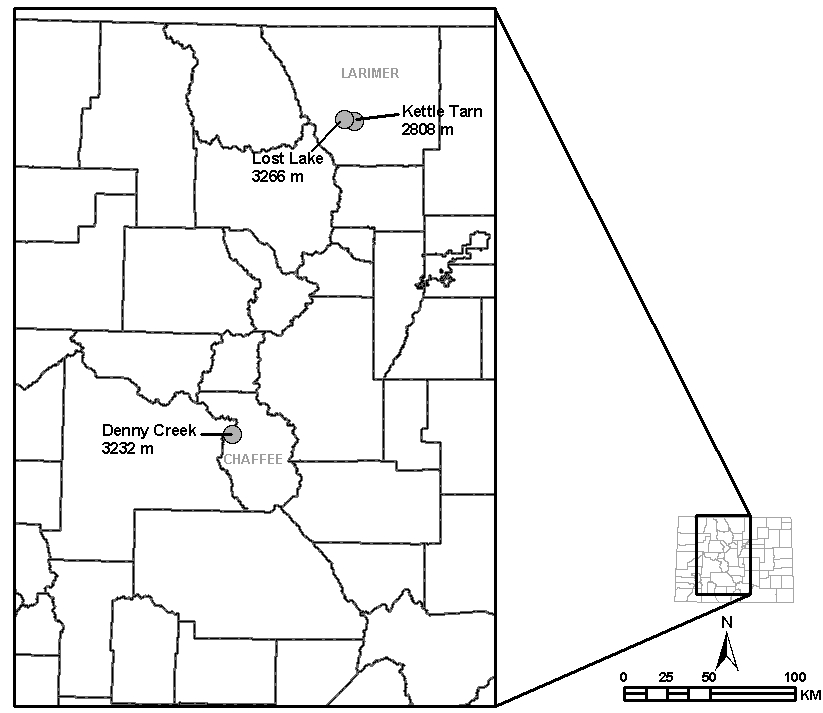Estimation of the probability of male toads to return to the breeding site
http://www.fort.usgs.gov/Products/Publications/21523/21523.pdf
Abstract/Summary
Male boreal toads are thought to return to the breeding site year after year and, if absent in a particular year, be more likely to be present the following year. Using Pollock’s robust design we estimated temporary emigration (the probability a male toad is absent from a breeding site in a given year) at locations in Colorado: Rocky Mountain National Park (n=2) and Chaffee County (n=1). We present data that suggest that male toads do not return to the breeding site every year. Estimates of both temporary emigration parameters ( ’ = probability that a male toad is absent from the breeding site at time i if absent at time i - 1; ” = probability that a male toad is absent at time i if present at time i - 1) varied by site and time (for example, at Lost Lake, the probability of temporary emigration ranged from 10 - 29%). Although we suspected that the probability of temporary emigration would be state dependent (Markovian temporary emigration, e.g. whether a male toad is at the breeding site at time i is affected by whether it was at the breeding site at time i - 1), the data showed greater support for models of random temporary emigration or no emigration. However, some models of Markovian emigration were supported. We also hypothesized relationships between temporary emigration and a number of environmental variables. While some competitive models included environmental covariates, model selection uncertainty precluded fully defining the role of these covariates in temporary emigration.
Publication details
| Published Date: | 2006 |
| Outlet/Publisher: | Ecology 87: 1048–1056 |
| Media Format: |
ARMI Organizational Units:
Rocky Mountains, Southern - BiologyRocky Mountains, Northern - Biology
Topics:
Monitoring and Population EcologyPlace Names:
ColoradoRocky Mountain National Park
San Isabel National Forest
Keywords:
amphibiansecology
methods
movement

